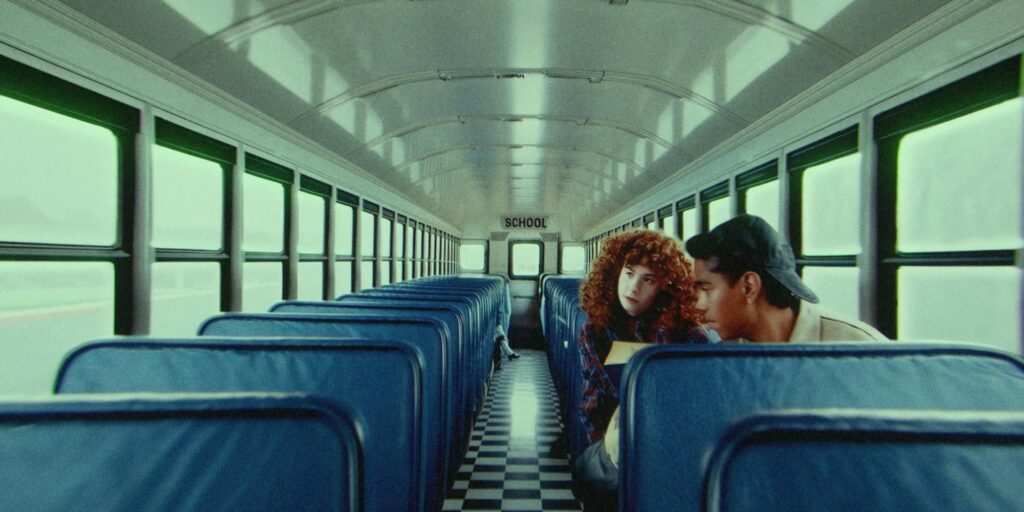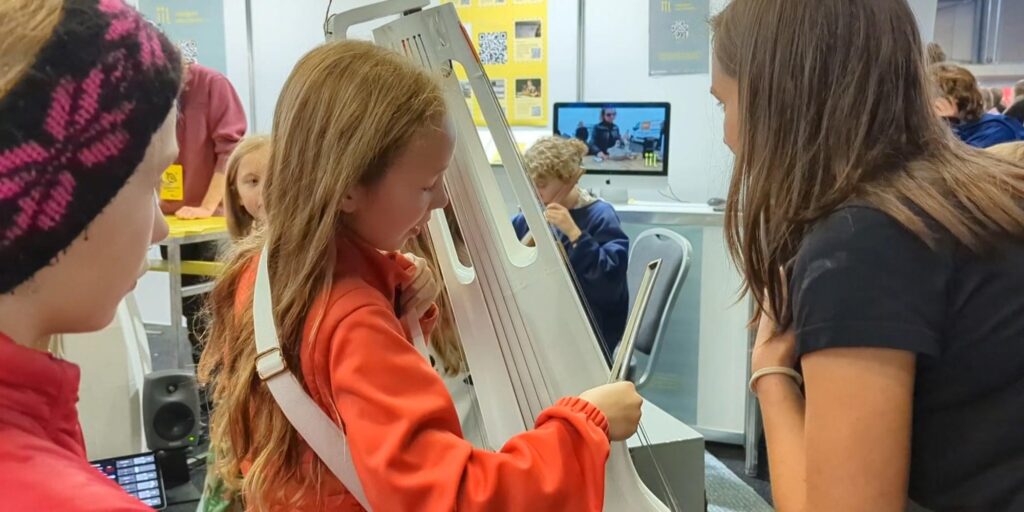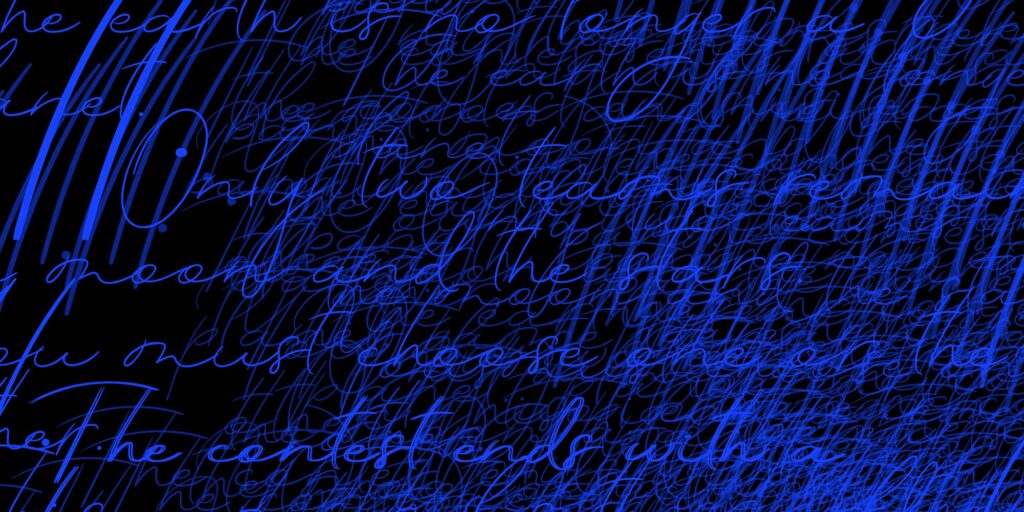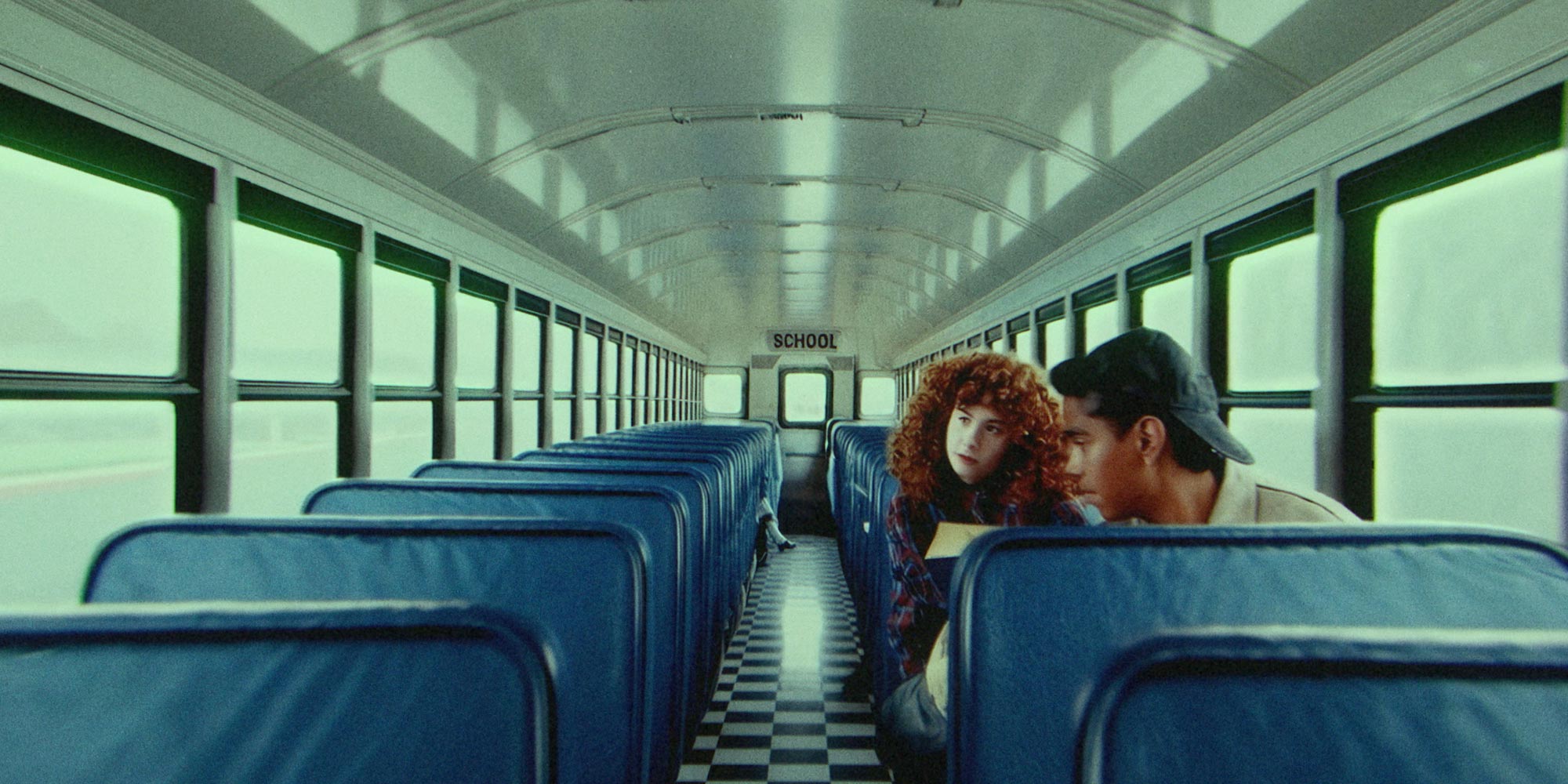AI in ART Award 2024
Golden Nica statue & € 10.000 prize money: Projects that demonstrate the excellence of human creativity that is possible because of the use of AI.

Golden Nica
Washed Out “The Hardest Part”
Paul Trillo (US)
A trip and a fall down memory lane. A continuous push forward through time tracking the relationship of a couple from middle-school into the afterlife. This is the first official commissioned music video collaboration between a music artist and filmmaker made with OpenAI’s Sora video model.
Photo: Paul Trillo

Award of Distinction
Intelligent Instruments in Citizen Science
Thor Magnusson (IS), Intelligent Instruments Lab (IS)
Artificial Intelligence is becoming increasingly human-like and it is now proficient in a key human activity: musical creativity. But what does this mean? How does creative AI change our notions of art, culture and society? As new machine learning technologies begin to mirror ourselves, we need to look into that mirror and ask how this is changing us.

Award of Distinction
REPETAE
Sasha Stiles (US)
REPETAE is an ongoing series by poet, language artist and AI researcher Sasha Stiles that invokes both poetry and machinic algorithm to explore how meaning accrues through repetition. The project leverages a suite of generative elements — AI-powered language, code-based visuals, digitally looped and layered spoken word — in standalone works and longer, interconnected cycles that embody various ways in which emotion and perception are shaped by pattern, as well as the interruption or subversion of pattern.
This award focuses on excellence in human creativity made possible by the use of AI and machine learning.
AI and machine learning technologies are being developed at an amazing pace every day, and such advanced technologies and the services that use them are already part of our daily lives. At this time, what kind of future visions do artists have and what will they accomplish with AI?
AI is clearly a tool but more and more also becoming a collaborator maybe even a co-creator. How do artists work with AI, connect it to our world, explore its impact and express it through art? What processes and algorithms are used behind the artwork? What future possibilities does the interaction of human and AI creativity show us?
Works and experiments in all categories and genres, from animation to music, installation, performance, and social implementation, are eligible. We expect to see art that is created through the unique use of AI.
Timeline
| January 12, 2024 | Start of the Prix Ars Electronica Open Call |
| March 11, 2024 | EXTENDED Submission deadline |
| April 25 – 28, 2024 | Prix Jury Weekend |
| June 17, 2024 | Press conference: The award winners are presented |
| September 4 – 8, 2024 | Ars Electronica Festival 2024 in Linz, Austria: Prix Ars Electronica Exhibition, Prix Forums, Prix Awards Ceremony, Events, Concerts, Performances, Workshops |
FAQ
- Groundbreaking artistic project with AI
- Projects should not be older than two years or have to show a significant update or further development within the last two years.
- The Uniqueness of AI Applications
- Transparency of the algorithms and processes behind the artwork
- The excellence of the vision in the interactivity of human and AI creativity
The winner of the Prix Ars Electronica – AI in Art Award will be awarded with €10.000,- prize money. A Golden Nica statue will also be presented at the awards ceremony. The winner will be invited to the awards ceremony at the Ars Electronica Festival in Linz, Austria, and if possible the work will be presented at the Ars Electronica Festival. (in the case of a group, please select one representative).
The jury convenes always between April and May in person in Linz or online. The jury will be compiled out of Ars Electronica.
If the submitted work is selected and honored by the jury the artist is committed to present the submitted work at the Ars Electronica Festival from September 4th to 8th, 2024.

